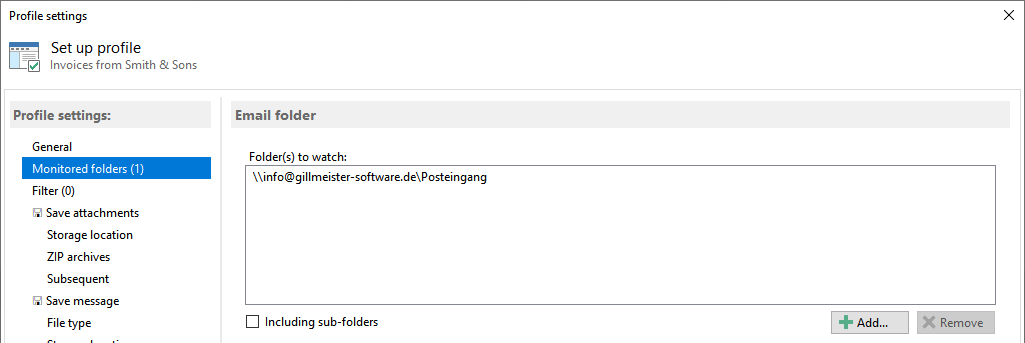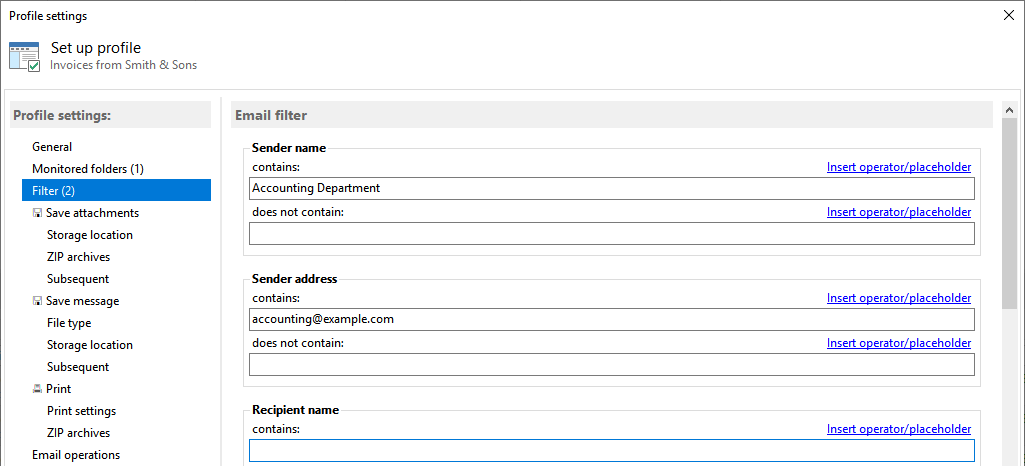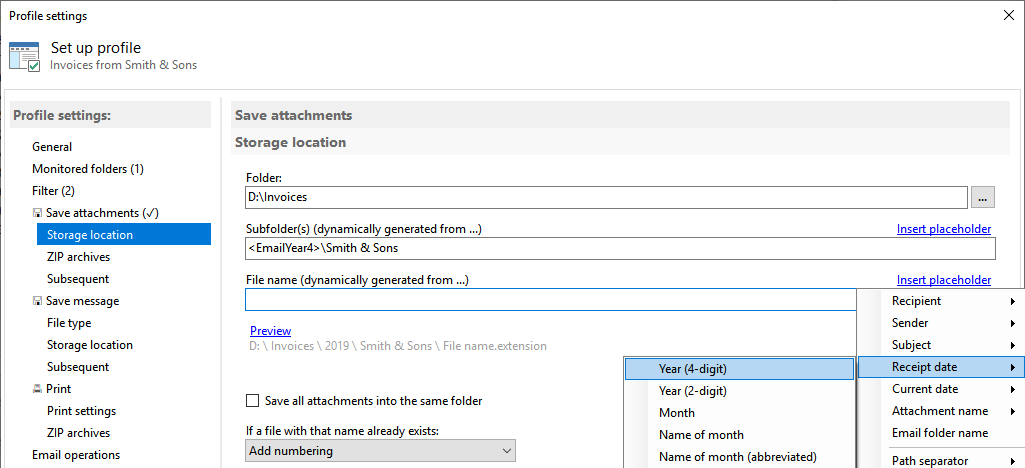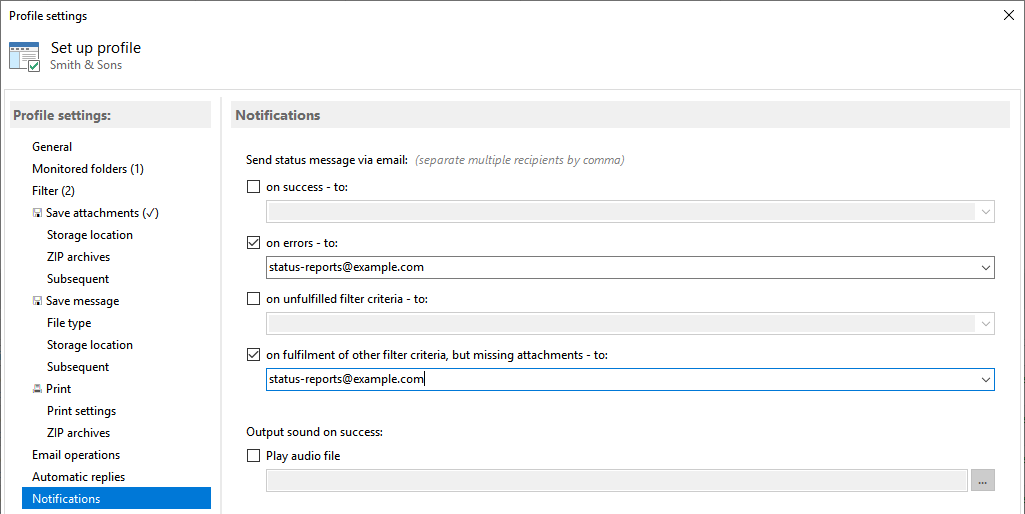Step-by-step instructions for automatically saving email attachments with Automatic Email Processor for Microsoft Outlook
Create a new profile
Click on "New Profile..." in the toolbar to create a new profile and open the configuration dialog box. Give the profile
a meaningful name such as "Invoices from Smith & Sons" and enter a comment if required, e.g. "Save attachments in network
folder Invoices". Optionally, you can have the profile highlighted in color so that you can quickly distinguish between the tasks
performed in the log list.

Specify the email folder to be monitored
Next, specify an Outlook email folder that you want to monitor, that is, a folder in which emails are received whose attachments
are to be automatically saved. To do this, click the Add button and select one of the Outlook email folders listed - for example,
the Inbox folder of your default email account.

Set up one or more filters
If you only want to save the attachments of certain emails, you can define various filter criteria here. For example, enter the
email address of the sender and part of the subject. To save only PDF file attachments, enter the term ".pdf"in the
field Attachment File Name Contains. Filter terms can also be combined with logical AND and OR. If you do not enter a filter
term, the attachments of all incoming messages in the monitored Outlook folder will be saved.

Activate the task Save Attachments
Next, click on the category "Save Attachments" and set the task status to Active.

Define the storage location
In this category you define the directory in which you want all matching attachments to be automatically saved and optionally
specify dynamic content to be used for the folder structure and/or the name of the attachments to be saved. First define the
base directory, e.g. "D:\Invoices\Smith & Sons" or, if you want to organize by year of receipt, only
"D:\Invoices". In the field Subfolder, you can use dynamic properties (e.g. sender name or similar) of the respective
email or attachment name. Click Placeholder and select, for example, the year of receipt. You can also specify the name of the
sender to use the following folder structure: "D:\Invoices\2019\Smith & Sons". Various email properties can also be
integrated in the file name of the attachment.
Furthermore, you can specify here how the program should behave if a file with the same name already exists.
In the category Subsequent you will find options to pass the path of the saved attachment to an executable file (e.g. a batch
script) as well as to replace the saved attachment with a link.

Email operations (procedure after successful processing)
Here you can define options for the processed message. For example, it is possible to mark the email as read or to move it to
any Outlook folder. The email folder can be automatically created in Outlook from parts of the message. You can also forward
the message to one or more recipients.

Automatic replies
If you want to inform the sender of a message about a status, you can configure this in this category. For example, you can send
a message if other filter criteria match, but expected attachments are missing, or inform the sender that the message was
successfully processed. In the program options you can set whether SMTP or the default Outlook account should be used for sending
the status message.

Internal notifications
The next step is to specify whether status messages regarding the processing the respective email (success, error, no match, ...)
are to be sent to a specific email address. For sending status messages, either the Outlook email account set as the default can
be used, or an email account with user-defined properties. After successfully saving an email attachment, any Wave file can also
be played.
